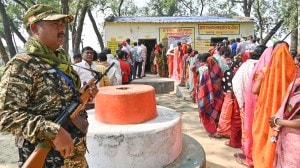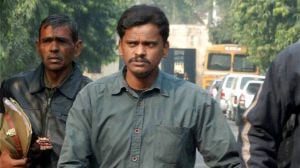Ashok Gehlot’s pre-poll ace — after no new district in 15 yrs, Rajasthan gets 19 in 1 day
The most number of new districts have been created in regions where the Congress performed well in the 2018 Assembly elections
 Chief Minister Ashok Gehlot announced the creation of 19 districts in one day. (File)
Chief Minister Ashok Gehlot announced the creation of 19 districts in one day. (File) The last time Rajasthan got a new district was in 2008, when the then Vasundhara Raje-led BJP government carved out Pratapgarh from the districts of Chittorgarh, Udaipur and Banswara. It became the 33rd district of India’s geographically largest state.
The status quo remained the same for 15 years, till last week, when Chief Minister Ashok Gehlot announced the creation of 19 districts in one day. After adjusting the new districts and breaking up a few existing ones, Rajasthan will now have 50 districts.
The populist move, which is being regarded as Gehlot’s ‘masterstroke’ in the election year, is expected to boost the Congress party’s prospects in those areas where the people had been demanding new districts for a long time. The most number of new districts have been created in regions where the Congress performed well in the 2018 Assembly elections.
Seven of the 19 new districts — Deeg, Dudu, Jaipur North, Jaipur South, Gangapur City, Kotputli-Behror and Khairthal — are situated in Jaipur and other regions of eastern Rajasthan, areas the Congress did well in. The newly-formed districts of Neem ka Thana and Deedwana-Kuchaman are part of the Shekhawati region, where the BJP performed poorly. Sikar, the home district of state Congress president Govind Singh Dotasra, has now been made a division. In 2018, the BJP had failed to win a single seat out of the eight Assembly constituencies in Sikar.
Similarly, five new districts have been created in western Rajasthan — Balotra, Jodhpur East, Jodhpur West, Phalodi and Sanchore — which was another region where the Congress had outperformed the BJP in 2018. Out of the 10 Assembly seats in Jodhpur — the home district of CM Gehlot — the BJP could win only two in 2018.
In comparison, the only new district in the Mewar region — a traditional stronghold of the BJP that the party had retained in 2018 by outperforming the Congress — is Salumber.
Apart from Sikar, the two new divisions created are Banswara — where Congress leader and minister Mahendra Jeet Singh Malviya is influential, and Pali — which, although a BJP stronghold, is near Gehlot’s Jodhpur.
Another noticeable trend in the creation of new districts is the rewarding of loyalist MLAs by Gehlot. Deeg, which has been carved out of Bharatpur, is the stronghold of cabinet minister Vishvendra Singh. A member of the erstwhile Bharatpur royal family, Singh had sided with former deputy chief minister Sachin Pilot in the 2020 political crisis, but has since then switched sides and now supports Gehlot.
Singh, who holds the civil aviation ministry, told Gehlot in jest at an event last year, “CM Sahab, I am your biggest Pilot.”
Kekri, the Assembly constituency of senior Congress leader Raghu Sharma, has now been made into a district. Independent MLAs Babulal Nagar and Ramkesh Meena, who also happen to be advisors of the CM and among his most vociferous supporters — never shy in taking on the Pilot faction — have been rewarded by converting their Assembly constituencies of Dudu and Gangapur City into districts.
The lone Pilot supporter whose Assembly constituency is now a district is the MLA from Neem Ka Thana, Suresh Modi.
Shahpura (previously in Bhilwara district), the Assembly constituency of senior BJP leader Kailash Meghwal — a loyalist of former BJP CM Raje — is also a district now. CM Gehlot had heaped praise on Meghwal during the 2020 political crisis, when the octogenarian leader had captured eyeballs by speaking against horse trading of MLAs while Gehlot accused the BJP of trying to topple his government.
Shortly after Gehlot announced the creation of the 19 new districts, many MLAs surrounded him, chanting slogans such as “Chauthi baar, Gehlot sarkar (Gehlot government for the fourth time)” in favour of the CM. Congress MLAs like Madan Prajapat, who since last year had pledged not to wear a shoe till Balotra wasn’t upgraded into a district, were greeted with huge pomp by their supporters after the announcement. The Balotra public gifted Prajapat a pair of shoes made of silver after his struggle bore fruit.
The Congress hopes that the creation of new districts will increase the stature of its MLAs among respective locals. For many villages, a new district means shorter distance from administrative headquarters, which were earlier located at a distance, separate SP offices and better reach of local governance due to the smaller size. Congress sources say the party is hoping all these factors will combine to help it fight anti-incumbency in the election year.
The opposition BJP has been scathing in its criticism of the decision to make new districts. Former CM Raje said the government has taken the decision to serve its political self-interest and has put the state’s finances at stake. Raje also said the districts were made without taking many factors into consideration, which will lead to administrative complications for the public in the coming years.
BJP legislator from Anupgarh, Santosh, thanked the CM for making Anupgarh, which was earlier part of Sriganganagar, into a district.
While confusion about the exact dimensions and jurisdictions of the new districts still exist, there also have been protests in areas where new districts were not announced, despite public demand. In places like Sujangarh, Bhiwadi and Bhinmal, which were not upgraded into districts, the public has resorted to bandhs and protests. Congress workers in these areas have also communicated their disappointment to the state leadership.



- 01
- 02
- 03
- 04
- 05




























